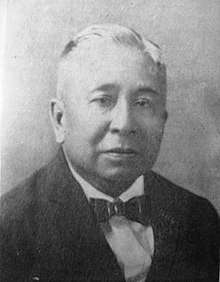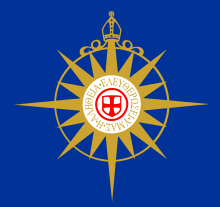Philippine Independent Church
The Philippine Independent Church (Spanish: Iglesia Filipina Independiente; Tagalog: Malayang Simbahan ng Pilipinas; Latin: Libera Ecclesia Philippina; colloquially called the Aglipayan Church, IFI and PIC) is an independent[2] Christian denomination in the form of a national church in the Philippines. Its schism from the Roman Catholic Church was proclaimed in 1902 by the members of the Unión Obrera Democrática Filipina, due to the mistreatment of the Filipinos by Spanish priests and the execution of José Rizal during Spanish colonial rule.
| Philippine Independent Church Iglesia Filipina Independiente | |
|---|---|
.svg.png) Coat of arms of the Philippine Independent Church Mottos in Latin: "For God and Fatherland - Scripture, Charity, Knowledge, Liberty" | |
| Abbreviation | IFI, PIC |
| Classification | Independent Catholic |
| Polity | Episcopal |
| Supreme Bishop | Rhee Timbang |
| Associations | National Council of Churches in the Philippines Christian Conference of Asia World Council of Churches Anglican Communion |
| Region | Philippines North America Europe Middle East Northeast Asia |
| Headquarters | Iglesia Filipina Independiente National Cathedral Ermita, Manila |
| Founder | Isabelo de los Reyes, Gregorio Aglipay |
| Origin | 1902 Manila, Philippine Islands |
| Separated from | Catholic Church |
| Members | 916,639 (2010)[1] |
| Other name(s) | Aglipayan Church, Filipinista Church, ICFI, PICC, ICAF, PCAC, ICAFI, PICAC, ICF, PCC, etc. |
| Official website | www |
Isabelo de los Reyes was one of the initiators of the separation, and suggested that former Catholic priest Gregorio Aglipay[3][4] be the head of the church. It is also known as the "Aglipayan Church", after its first Supreme Bishop, Gregorio Aglipay, who like José Rizal, later became a Freemason, in May 1918.[5][6]
Pope Leo XIII instructed the Archbishop of Manila, Bernardino Nozaleda y Villa to excommunicate those who initiated the schism.[7] Since 1960 the church has been in full communion with the Episcopal Church in the United States, and through it, the entire Anglican Communion.
Members commonly believe in the rejection of the exclusivity right to apostolic succession by the Petrine papacy, the allowing of priestly ordination of women, optional clerical celibacy, tolerance of Freemasonry, and support for contraception and same-sex civil rights, however the members of the Church still believe in transubstantiation and the Real presence of Christ in the Eucharist. Many saints canonized by Rome after the 1902 schism are not recognized by the Aglipayan church and its members.
As of 2017 the Supreme Bishop was Rhee Timbang, whose central office is located at the National Cathedral of the Holy Child in Ermita, Manila.
Name
The church's official name is Iglesia Filipina Independiente, or, in English, the Philippine Independent Church. The church or its members are referred to by the acronym IFI as well as by a variety of names in the various languages of the Philippines, such as Ilocano: Siwawaya nga Simbaan ti Filipinas; Tagalog: Malayang Simbahan ng Pilipinas; and Kinaray-a: Simbahan Hilway nga Pilipinhon.
History
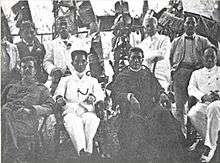
Philippine Revolution and Gregorio Aglipay

Gregorio Aglipay was an activist and a Roman Catholic priest from Ilocos Norte who would later be excommunicated by then Archbishop of Manila Bernardino Nozaleda y Villa for fomenting schism with the Pope. During the Philippine Revolution, Isabelo de los Reyes (also known as Don Belong) and Aglipay acted to reform the Filipino Catholic clergy. Aglipay was the convener of the Filipino Ecclesiastical Council (Paniqui Assembly), in response to Mabini's manifesto urging the Filipino clergy to organize a Filipino national Church. He was a member of the Malolos Congress, the lone member coming from the religious sector, although he also represented Ilocos Norte. He was a guerilla leader of Ilocos Norte during the Philippine–American War with the rank of lieutenant general. Following the Philippine–American War, Aglipay and De los Reyes founded the Philippine Independent Church in 1902. The new church rejected the spiritual authority of the Pope (then Pope Leo XIII) and abolished the celibacy requirement for priests, allowing them to marry. At that time, all of its clergy were former Catholic priests.
Aglipay drew upon the Masons for some concepts of theology and worship. He was supported by Miguel Morayta, the Grand Master of the Spanish Orient Lodge of Freemasonry in Madrid.[8] Aglipay became a Mason in 1918.[9] The historian John N. Schumacher contends that Morayta and other non-Filipino laymen pushed Aglipay toward schism with the Catholic Church because of their resentment of the activities of Catholic religious orders in the Philippines rather than Filipino nationalism.[8]
The new Iglesia Filipina Independiente reformed the Latin Tridentine liturgy, adopting the vernacular in worship, and modeling its liturgy on the Anglican Book of Common Prayer. Mass in the IFI has been said in Spanish since the earliest days of its independence, but it is also said in Tagalog.
Visiting other churches while traveling abroad, Aglipay developed his theology, coming to reject the divinity of Jesus and the concept of the Trinity and becoming theologically Unitarian. Other IFI officials refused to accept this revised theology. Aglipay's unitarian, rationalist, and progressive theological ideas were evident in the church's Catecismo (1905)[10] and Oficio Divino (1906),[11] and in his novena, Pagsisiyam sa Birhen sa Balintawak, 1925[12] and its English translation, Novenary of the Motherland (1926).[13]
Winning large numbers of adherents in its early years because of its nationalist roots, Aglipayan numbers decreased due to factionalism and doctrinal disagreements. The American government of occupation, after the Philippine–American War ended in July 1902, decided to return to the Catholic Church those parish buildings that had become Aglipayan during the Philippine Revolution and this further limited church growth. There were tensions within the church from the beginning between Aglipay's liberal followers and more traditional members. Eventually there would be a schism: after Aglipay's death in 1940 the courts awarded the name and assets to the Trinitarian faction. Some factions formally joined other denominations including the Episcopal Church and the American Unitarians.
In 1961, the IFI joined the Anglican Communion and its bishops were re-consecrated into the historic succession of the Anglican line.
Present
Today, Aglipayans in the Philippines claim to number at least 6 to 8 million members, with most from the northern part of Luzon, especially in the Ilocos Region, the province of Zambales, the Southern Luzon province of Cavite, parts of Visayas like the provinces of Antique, Iloilo and Guimaras, and in the Northern Mindanaon province of Misamis Occidental. Congregations are also found throughout the Philippine diaspora in North America, Europe, Middle East and Asia. The church is the second-largest single Christian denomination in the country after the Roman Catholic Church (some 80.2% of the population), comprising about 6.7% of the total population of the Philippines. By contrast, the 2010 Philippine census recorded only 916,639 members in the country, or about 1% of the population.
Some of the members of the church, like the founders Aglipay and De los Reyes, are political activists, often involved in progressive groups and advocating nationalism, anti-imperialism, democracy, as well as opposing extrajudicial killings. They have often been victims of forced disappearances and been branded as leftist by the government for being aligned with progressive groups, specifically after Obispo Máximo IX Alberto Ramento was killed in 2006 for being an anti-government critic.
Doctrine and practice
Priesthood
The Iglesia Filipina Independiente maintains the historic threefold ministry of bishops, priests, and deacons. Bishops of the Iglesia Filipina Independiente derive their apostolic succession from the Episcopal Church in the United States of America, which was first bestowed on April 7, 1948. The Iglesia Filipina Independiente ordains women. The Church allows its priests to marry, rejecting mandatory clerical celibacy. In May 2019 Emelyn Dacuycuy became the first woman to be ordained bishop in the Iglesia Filipina Independiente.[14][15]
Worship and liturgy
The main Sunday liturgy is the Eucharist or the Holy Mass, which is said in the vernacular. The Eucharistic liturgy of the Iglesia Filipina Independiente resembles that of the Roman Missal, with elements taken from the Anglican Book of Common Prayer, such as the Collect for Purity, the positioning of the Peace before the Offertory, the Eucharistic Prayers, and the Prayer of Humble Access. Orders of service and ceremonies are contained in the Filipino Ritual and Filipino Missal. Aglipayans believe in the Real Presence of Christ in the Eucharist, and Communion is distributed under both kinds. Being a nationalist church, Aglipayans employ Filipino national symbols in their liturgical practices, such as the use of national colors and motifs, as well as the singing of the national anthem, and the displaying of the Philippine Flag in the sanctuary.
Contraception
Aglipayan bishops joined public demonstrations in support of the Reproductive Health Bill, a law advocating for contraception and sex education that the Catholic Church and several other Christian denominations objected to on moral grounds.
LGBT rights
The Philippine Independent Church has had a history of violence against members of the LGBT community. However, in the early 21st century, the church position changed dramatically to an extent where the church leadership apologized through an official statement to the LGBT community. The church recognized that it has "shown indifference, and have made the LGBT people feel less human, discriminated against and stigmatized". The statement – dubbed "Our Common Humanity, Our Shared Dignity" – stresses the church's position that it "must openly embrace God's people of all sexes, sexual orientations, gender identities and expressions".[16]
The apology statement's groundwork first came up in 2014, when a gay man articulated during the church plenary his query about the church's plans for sexual minorities. This led to discussions among the newly elected set of national youth officers, led by an openly gay president and a lesbian executive vice president, which would later be succeeded by another openly gay president. The church position on LGBT persons was officially adopted by the entire church in February 2017.[16]
Executive Commission
The General Assembly is the highest governing body that meets every three years. The Executive Commission is mandated by the General Assembly to act on its behalf, when not in session, on matters ordinarily within its jurisdiction. The Executive Commission meets regularly during the ad interim period.
The Obispo Maximo presides as ex-officio Chairperson of the Executive Commission. Other members include the Chairperson of the National Lay Council, as ex-officio vice-chairperson; the General Secretary, as ex-officio secretary; the chairpersons of the Commission on Programs and Projects and the Commission on Business and Finance; five bishops elected by the Supreme Council of Bishops, five priests elected by the Council of Priests; and the three presidents of the national sectoral organizations of the men, women and youth of the Church.
Two other elected officers of the Church, the General Treasurer and General Auditor, are given permanent invitation by the Executive Commission to join during regular meetings. They are permitted to deliberate but not granted with the right to vote.
- Obispo Maximo
- General Secretary
- General Treasurer
- Auditor General
- Chairperson, Supreme Council of Bishops [SCB]
- Chairperson, Mindanao Bishops' Conference [MinBisCon]
- Chairperson, North-Central Luzon Bishops Conference [NC-LBC]
- Chairperson, South-Central Luzon Bishops Conference [SC-LBC]
- Bishop, Visayas Bishops Conference [ViBisCon]
- Bishop, USA and Canada Conference [Abroad Conference]
- Chairperson, Council of Priests
- Governor General, National Priests Organization
- Representative, COP Visayas
- Representative, COP North-Central Luzon
- Representative, COP Mindanao
- Chairperson, National Lay Council
- National President, Laymen of the Iglesia Filipina Independiente
- National President, Women of the Philippine Independent Church
- National President, Youth of the Iglesia Filipina Independiente
- Chairperson, Commission on Business and Finance
- Chairperson, Commission on Programs and Projects
Organization
The Church has 47 dioceses, including the Diocese of the Eastern and Western United States and Canada. However, a lack of priests means that many parishes in the United States must depend on lay leaders.
The church is led by the Obispo Máximo or Supreme Bishop, similar to a presiding bishop in other denominations. The current Obispo Máximo is The Most Rev Rhee XIII Timbang y Millena, who was elected on May 14, 2017.
The Supreme Council of Bishops (SCB) consists of all serving and retired bishops. Its main tasks include maintaining and defining doctrinal orthodoxy, the adoption and prescription of liturgy.and the overall pastoral and moral guidance to the faithful. There are also regional episcopal conferences, North Central Luzon Bishops Conference, South Central Luzon Bishops Conference, Visayas Bishops Conference, and Mindanao Bishops Conference.
The Council of Priests (COP) is the group of delegates to the General Assembly that are entirely priests. It elects a chairperson, a vice-chairperson and a secretary that have each terms of three years. The Council of Priests promotes the welfare of the clergy and represents their concerns to the General Assembly.
The National Lay Council is composed of the men, women and youth delegates of every diocese represented in the General Assembly. It works to promote and enhance the participation of the laity in the governance and general affairs of the Church. There are also several sectoral groups, such as the Women of the Philippine Independent Church (WOPIC), Youth of the Iglesia Filipina Independiente (YIFI), and Laymen of the Iglesia Filipina Independiente (LIFI).
General Assembly
The Iglesia Filipina Independiente has a strong tradition of authority belonging to the entire people of God. This conciliar nature of authority in the Church is expressed in the General Assembly where the clergy and laity are both represented.
The Iglesia Filipina Independiente is a Church that is governed synodically. It has the General Assembly as the highest governing and policy-making body that regularly convenes every three years. It consists of all bishops, two priests in active duty, and three and three delegates representing the men, women, and youth from every diocese elected in a convention, as provided in Sections 1 and 2, Article II, of its Constitution.
The General Assembly operates as a synod through which the ordained and non-ordained share the responsibility of witnessing to the apostolic faith by virtue of their common baptism. It serves as the governing body of the Church in fulfilling the mission entrusted by God, in safeguarding the unity and continuity of the apostolic faith, and in guiding the faithful in the fulfillment of their baptismal covenant. It is thus the final authority in all matters affecting the life, order and discipline of the Church.
In the spirit of consultation, the General Assembly tackles complex and contentious issues and matters that touch on the institutional components of the Church that have to do with governance, policies, and programs. On the whole, the General Assembly:
- receives the address of the Obispo Maximo
- acts upon the decisions of the Executive Commission
- receives report of the General Treasurer
- receives reports of the Commission on Business and Finance (CBF) and the Commission on Programs and Projects (COPP)
- receives reports of the Supreme Council of Bishops, Council of Priests and National Lay Council
- approves the program of the Church
- approve the triennial budget
- elects the Executive Commission and the national officers of the Standing Commission
Commission
There are six commissions that promote the enduring concerns in the various aspects of the life of the Church, with each composed of people with expertise in the particular areas. The Commissions are primarily recommendatory in nature in terms of formulation of policies, which are subject to the final approval of the Executive Commission and the General Assembly of the Church.
- Commission on Business and Finance
- Commission on Programs and Projects
- Commission on Education and Ministry
- Commission on Liturgy and Music
- Commission on Mission and Evangelism
- Commission on Ecumenical Relations and International Affairs
Councils
The church has three important councils that are represented in the General Assembly. These are the Supreme Council of Bishops, the Council of Priests and the National Lay Council. These play important leadership roles in setting the direction of the church and in pursuing institutional development for the work of mission.
- Supreme Council of Bishops
The Supreme Council of Bishops (SCB), which consists of all serving and retired bishops, defines the doctrines of the Church, adopts and prescribes official liturgical rites, and gives pastoral and moral guidance to the faithful.
- Council of Priests
The Council of Priests is composed of all priest-delegates to the General Assembly. It elects a Chairperson, a Vice Chairperson and a Secretary for an office of three years. The Council of Priests promotes the welfare of priests and represents their concerns to the General Assembly.
- National Lay Council
The National Lay Council is composed of the men, women and youth delegates of every diocese represented in the General Assembly. It works to promote and enhance the participation of the laity in the governance and general affairs of the Church.
Lay organizations
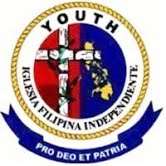
There are three sectoral organizations of the laity in the Church. These are the Youth of the Iglesia Filipina Independiente (YIFI), the Women of the Philippine Independent Church (WOPIC) and the Laymen of the Iglesia Filipina Independiente (LIFI).
The sectoral organizations are each governed by their respective constitution and by-laws, have their own sets of elected officers, and are organized at the national, diocesan and parish levels.
The youth, women, and men of the sectoral organizations are represented to the General Assembly through the National Lay Council.
Notable churches
Owing to its roots in the Roman Catholic Church in the Philippines, the church buildings of the Philippine Independent Church do not differ significantly from Catholic church buildings. Some of its notable churches are listed here.
Cathedral of the Holy Child (National Cathedral)
The Cathedral of the Holy Child in Ermita, Manila is the National Cathedral of the Philippine Independent Church, and the seat of the Obispo Máximo. Designed by architect Carlos Arguelles, construction of the church began in 1964 and was inaugurated on May 8, 1969, on the occasion of the 109th birth anniversary of its first Obispo Máximo, Gregorio Aglipay.[17] The church is made largely of bare concrete and wood and has been noted for having a suspended block with sloping trapezoidal walls and textured with horizontal grooves all throughout, suspended with a triangular block.[18]
María Clara Church
The María Clara Church in Santa Cruz, Manila, was originally built as a wooden structure in 1923 before it was expanded and becoming concrete structure in the 1950s. When the original cathedral of the Iglesia Filipina Independiente in Tondo was destroyed during World War II, the María Clara Church became the temporary office of the Obispo Máximo before relocating in 1969 to the present Cathedral of the Holy Child.[17]
It was the also home parish of the fourth Obispo Máximo, Isabelo de los Reyes, Jr., where he was ordained as a priest in 1923, and elected Supreme Bishop in 1946.
 Cathedral of St. William, Laoag City, Ilocos Norte
Cathedral of St. William, Laoag City, Ilocos Norte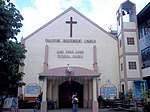 Cathedral of St. Michael the Archangel, Doña Maria Clara Memorial Church, Camiling, Tarlac
Cathedral of St. Michael the Archangel, Doña Maria Clara Memorial Church, Camiling, Tarlac.jpg) Parish of the Virgin of the Assumption in Maragondon, Cavite
Parish of the Virgin of the Assumption in Maragondon, Cavite- Cathedral of San Roque, San Felipe, Zambales
 Cathedral of the Holy Child, Pandacan, Manila
Cathedral of the Holy Child, Pandacan, Manila%2C_Odiongan%2C_Romblon..jpg) Cathedral of St. Vincent Ferrer, J.P. Rizal St., Tabin-dagat (Poblacion), Odiongan, Romblon
Cathedral of St. Vincent Ferrer, J.P. Rizal St., Tabin-dagat (Poblacion), Odiongan, Romblon Cathedral of St. John the Baptist, Bago City, Negros Occidental
Cathedral of St. John the Baptist, Bago City, Negros Occidental Cathedral of Our Lady of Providence and Guide, Albasan, Numancia, Aklan
Cathedral of Our Lady of Providence and Guide, Albasan, Numancia, Aklan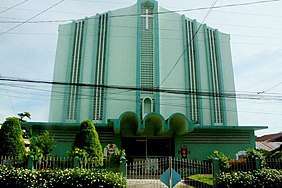 Cathedral of St. Mary, Ozamis City, Misamis Occidental
Cathedral of St. Mary, Ozamis City, Misamis Occidental Cathedral of the Holy Child, Dapa, Surigao del Norte
Cathedral of the Holy Child, Dapa, Surigao del Norte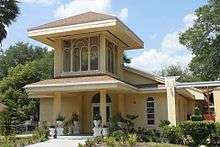 Cathedral of Jesus of Nazareth, Tampa, Florida, United States of America
Cathedral of Jesus of Nazareth, Tampa, Florida, United States of America
Seminaries
The Aglipay Central Theological Seminary (ACTS) in Urdaneta City, Pangasinan is the regional seminary of the church dedicated to serve the North-Central and South-Central Luzon Dioceses. ACTS offers a Bachelor of Theology and Divinity Programs for those who aspire to enter the ordained ministry in the Church. It is a four-year study program with a curriculum focused on biblical, theological, historical and pastoral studies with reference to parish management and development and wider cultural and social context.
St. Paul's Theological Seminary (SPTS) is the regional seminary of the church dedicated to serve the Visayas and Mindanao Dioceses.
St. Andrew's Theological Seminary (SATS) is run by the Episcopal Church in the Philippines, but serves both that church and the Iglesia Filipina Independiente.
St John the Divine School of Theology is soon to be established in Mindanao to cater strong demand of aspirants for the ordained ministry in Conference.
Churches in full communion
The church is in full communion with many similar churches, including Old Catholic Churches which are part of the Union of Utrecht, all the Churches of the Anglican Communion such as the Church of England, the Episcopal Church in the Philippines, and the Episcopal Church in the United States of America,[19] and the Mar Thoma Syrian Church. The Aglipayan Church is not a member of the Union of Utrecht.
By virtue of its concordat relations with the Anglican churches, the Philippine Independent Church is given the privilege to send delegates to the Council of Churches of East Asia (CCEA) as organized by the Anglican provinces in East Asia in 1962. Since 1964, IFI bishops have also been regular participants of the Lambeth Conferences. The IFI also has a concordat with the Church of Sweden.
Relation with the Anglican realignment
The Philippine Independent Church endorsed a concordat with the Anglican Church in North America, on January 2020, in a meeting held in Melbourne, Florida, which will be presented for approval at the ACNA's Provincial Council in June.[20]
Notable members
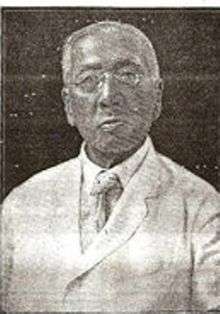
- The Most Rev. Gregorio Aglipay y Labayan, Obispo Máximo I – first Supreme Bishop of the Filipino Church, Vicar General of the Revolutionary Government. The only clergy delegate who was present during the creation of the Malolos Constitution.
- Don Isabelo de los Reyes – also known as Don Belong, Reyes was a prominent Filipino politician, writer, translator of the first Filipino-language Bible and labour activist in the 19th and 20th centuries. he proclaimed the establishment of the IFI, he is often called the "Father of Filipino Socialism" for his writings and activism with labour unions, most notably the Union Obrera Democratica Filipina. Don Belong translated the English Bible to the Ilocano language.
- Emilio Aguinaldo – First President of the Philippines. With his influence, together with other Caviteño revolutionary generals and officers, the IFI gained a sweeping stronghold in Cavite. His brother, Baldomero, was the president of Comité de Caballeros of the IFI in Kawit; while his youngest sister Felicidad, his wife Hilaria del Rosario, and his mother Trinidad Famy were officers of the Comisión de Damas (Women's Commission) of the Church.
- Apolinario Mabini – a Filipino political philosopher and revolutionary who wrote a constitutional plan for the First Philippine Republic, and served as its first Prime Minister in 1899.
- Melchora Aquino – was a Filipina revolutionary who became known as Tandang Sora because of her age (84) when the 1896 Philippine Revolution broke out. She gained the titles "Grand Woman of the Revolution" and "Mother of Balintawak" for her contributions to the independence movement. She was among the Church's most prominent and devoted followers in Caloocan.
- Gen. Baldomero Aguinaldo – a revolutionary general and brother of Gen. Emilio Aguinaldo; elected President of the Comite de Caballeros of the IFI in Kawit; grandfather of Cesar Virata.
- Lope K. Santos – Nationalist and playwright from Pandacan, Manila. Introduced the now-obsolete Abakada Tagalog spelling reform in 1940.
- Aurelio Tolentino – Prominent Pampango writer, dramatist, and one of the founders of Katipunan. The foremost advocate of the establishment of the Filipino Church in Pampanga.
- Vicente Sotto – dramatist, writer, journalist, foremost anti-friar, the fiery Publisher-Editor of Ang Suga and El Pueblo; and the prominent founder of the Filipino Church in Cebu. (He was the grandfather of Sen. Vicente "Tito" Sotto III and actor Vic Sotto.)
- Mariano Marcos – was a lawyer and a politician from Ilocos Norte, Philippines. A Congressman from 1925 to 1931. He is best known for being the father of former president and dictator Ferdinand Marcos.
- Ferdinand E. Marcos – former Filipino dictator (1965-1986); son of Mariano. raised Aglipayan, but subsequently changed religion to marry Imelda R. Marcos.
- Felipe Buencamino Sr. – co-writer of the Constitution of the Philippine Republic at Malolos, Filipino composer. A co-founder of the IFI.
- Most Rev. Santiago Antonio Fonacier y Suguitan, Obispo Máximo II – second Supreme Bishop. A writer known for translating Noli Me Tángere and El Filibusterismo into Ilocano.
- Most Rev Soliman Ganno y Flores, Obispo Máximo VII – eighth Supreme Bishop. Successfully solicited funds to build the Cathedral of the Holy Child and became its first dean. Installed as Obispo Máximo in 1987, but died in office in 1989 of heart failure at the Cathedral altar.
- Most Rev. Alberto Ramento y Baldovino, Obispo Máximo IX – ninth Supreme Bishop. Assassinated in 2006 for being a government critic and an active campaigner against Human Rights violations in the Philippines.
- José Garvida Flores – Patriot, prolific Ilokano writer and playwright from Bangui, Ilocos Norte. Composed "Filipinas Nadayag a Filipinas", which is sung during services of the IFI.
- Cesar Virata – the fourth Prime Minister of the Philippines from 1981 to 1986 under the Interim Batasang Pambansa and the Regular Batasang Pambansa. One of the Philippines' business leaders and leading technocrats, he served as Finance Minister from 1970 during the Marcos regime and also through election became Prime Minister in 1981. He concurrently was Finance Minister throughout the 80's. He is the grandnephew of the first Philippine President, Emilio Aguinaldo.
- Rep. Crispin Beltran – the "Grand Old Man of Philippine Labour". was a Filipino politician and labour leader. A staunch critic of Gloria Macapagal-Arroyo, his imprisonment in 2006 and 2007 on disputed charges of rebellion and sedition drew international attention. As a member of 13th Congress of the Philippines with the Anakpawis or the 'Toiling Masses Partylist' and former chair of Kilusang Mayo Uno (KMU) (a militant and progressive labour movement), he was a major figure in contemporary Filipino history. Died when he fell while repairing the roof of his house.
- Bayani Fernando – former chairman of the Metropolitan Manila Development Authority.
- Calixto Zaldivar – former representative, Lone District of Antique (1934–1935), former Governor of Antique (1951–1955) and former Associate Justice of the Supreme Court (1964–1974). Former president of the National Lay Organization of the IFI.
- Enrique A. Zaldivar – son of Justice Zaldivar. Former Governor of Antique, and former Ambassador to Brunei.
- Salvacion Z. Perez – former Governor of Antique, daughter of Justice Zaldivar.
- Gedeon G. Quijano – former Governor of Misamis Occidental. Son of IFI Bishop Juan P. Quijano.
- Eduardo Firmalo – incumbent Governor of Romblon.
- Deo Macalma – DZRH broadcaster, Mayor of Star City.
- Gardeopatra G. Quijano – WOPIC President (1975–1977).
- Ladislao Bonus – was a composer, conductor, contrabass player, and teacher in Pandacan, Manila. Considered as "Father of the Filipino opera".
- Andrea Rosal – daughter of NPA spokesperson Gregorio "Ka Roger" Rosal.
- Daniel Fernando – Vice Governor of Bulacan.
- Roy Agullana Cimatu – 29th AFP Chief of Staff, former Special Envoy to the Middle East and currently the Secretary of the DENR.
- Dodod Cadiao - Incumbent Governor of Antique.
- Benjamin Abalos, Sr - Former Mandaluyong City Mayor, Former Chairman of Commission on Elections and Metropolitan Manila Development Authority.
- Benjamin Abalos Jr. - Former Three Termer Mandaluyong City Mayor (1998 - 2016)
- Menchie Aguilar-Abalos - Wife of Former Mayor Benhur Abalos, The Current City Mayor of Mandaluyong.
See also
- Christianity in the Philippines
- Iglesia ni Cristo
- Independent Catholic churches
- Protestantism in the Philippines
References
- "Table 1.10; Household Population by Religious Affiliation and by Sex; 2010" (PDF). 2015 Philippine Statistical Yearbook. East Avenue, Diliman, Quezon City, Philippines: Philippine Statistics Authority: 1–30. October 2015. ISSN 0118-1564. Retrieved 4 February 2017.
- The Philippine Independent Church does not subject its episcopal authority to the Bishop of Rome or to any other Popes prior to the First Vatican Council.
- Achutegui, Pedro S. de & Bernad, Miguel A. (1971) "The Religious Coup d'Etat 1898–1901: a documentary history", in Religious Revolution in the Philippines, Volume III. Manila: University Press (cited in Larkin, John A. "Review 74-- No Title", The Journal of Asian Studies, Nov 1972; 32,1. at Proquest (subscription)
- History Archived 2014-03-19 at the Wayback Machine
- Religion & Religions, Dominican House of Studies, Quezon City, Philippines, 2nd edition, 1982
- http://www.grandlodgephils.org.ph/2012/?page_id=324
- "Pope Orders Sharp Action; Archbishop of Manila Instructed to Excommunicate Philippine National Church Promoters", New York Times, New York, NY: Dec 29, 1902. p.7
- Schumacher, John N., Revolutionary Clergy: The Filipino Clergy and the Nationalist Movement, 1850-1903, p. 224, Ateneo de Manila U Press, ISBN 971-550-121-4, ISBN 978-971-550-121-7
- Denslow, William R., 10,000 Famous Freemasons, Part One, p. 7 (Kessinger Publishing, 2004) ISBN 1-4179-7578-4, ISBN 978-1-4179-7578-5
- Catecismo de la Iglesia Filipina Independiente (in Spanish). Manila: Imprenta de Fajardo y Compañía. 1905. Retrieved 11 February 2020. Digitized by the Biblioteca Nacional de España.
- Oficio divino de la Iglesia Filipina Independiente (in Spanish). Barcelona: Isabelo de los Reyes. 1906. Retrieved 11 February 2020. Digitized by the Biblioteca Nacional de España.
- Aglipay, Gregorio, Pagsisiyam sa Birhen sa Balintawak Archived 2010-03-27 at the Wayback Machine, 1925
- Aglipay, Gregorio, Novenary of the Motherland Archived 2010-03-27 at the Wayback Machine, 1926
- Vergara, Winfred (2019-05-24). "First woman bishop makes history in Philippine Independent Church". Episcopal News Service. Retrieved 2019-05-30.
- Vergara, Winfred (April 29, 2019). "Philippine Independent Church prepares to consecrate first woman bishop". Episcopal News Service. Retrieved December 14, 2019.
- "Iglesia Filipina Independiente asks forgiveness from LGBT community, extends hand with pro-equality statement - Outrage Magazine". Outragemag.com. Retrieved 28 November 2018.
- "History". Iglesia Filipina Independiente National Cathedral. Archived from the original on 2015-04-08.
- Lico, Gerard (2008). Arkitekturang Filipino. Quezon City: University of the Philippines Press. ISBN 978-971-542-579-7.
- "Anglican Communion: Churches in Communion". Anglican Communion Website.
- College of Bishops Communiqué, ACNA Official Website, January 2020
